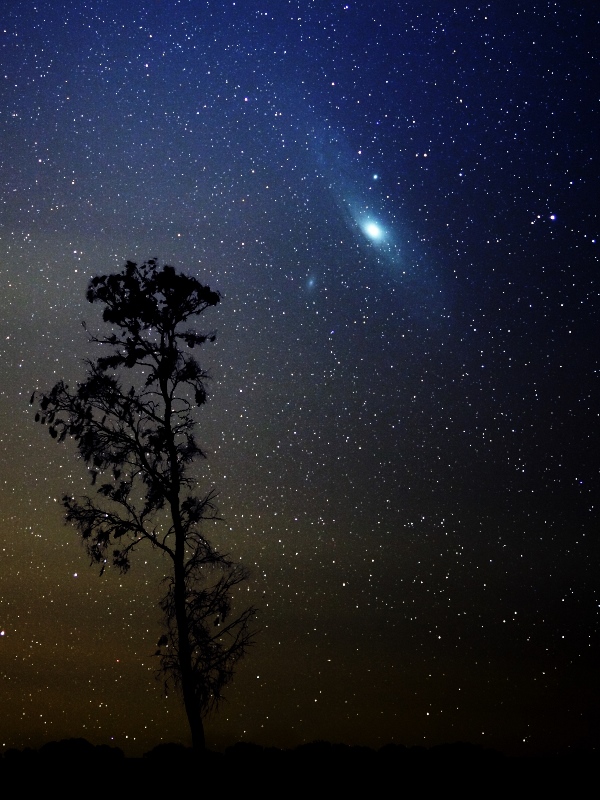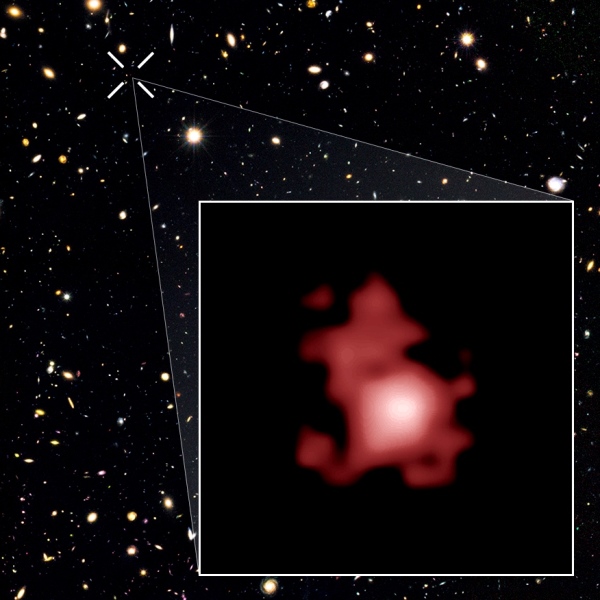Witnessing the Dawn of Creation
The heavens are telling of the glory of God, and their expanse is declaring the work of His hands. (Psalm 19:1, NASB)
God wasn’t alone when he created the universe. He had an audience. The book of Job describes, in elegant poetry, how God laid the foundations of the world “while the morning stars sang together and all the angels shouted for joy.” (Job 38:7, NIV) Can you imagine what it would be like to see what the angels saw? Wouldn’t it be awesome to gaze in wonder as the Creator stretches out the heavens like a canopy (Isaiah 40:22) and calls stars and galaxies into existence? In a way, we can!
We can’t step outside the physical dimensions of reality to see things as they might have appeared from the angels’ perspective, of course. Nevertheless, from our earthly vantage point, we can gaze into the past. Consider the most distant object visible to the unaided eye: the Andromeda Galaxy.Under exceptional viewing conditions, people with extraordinarily good vision are sometimes able to spot the Triangulum Galaxy, which is slightly farther away than Andromeda. It’s the nearest neighbor to our own Milky Way, yet it is so far off that its light takes two and a half million years to reach our eyes. We see Andromeda not as it is today, but as it was long before the beginning of human history.
Only the bright core of the Andromeda Galaxy is visible to the unaided eye, but the galaxy as a whole is actually much larger than the bright spot we can see. In fact, it would appear several times larger than the moon if our eyes were sensitive enough to pick up the dim light from its perimeter. This photo was taken without a telescope (but with a sensitive camera).
With the aid of telescopes, we can peer deeper into space. The farther we look, the further back in time we see. Sensitive instruments like the Hubble Space Telescope have detected the faint glimmer of galaxies near the horizon of the observable universe, galaxies so remote that their light has taken over 13 billion years to arrive. That’s almost as long as the age of the universe. If the Big Bang model is correct, those distant galaxies had barely begun to form when they emitted the light that is finally reaching us now—ancient starlight from the dawn of creation!

To study how galaxies have developed over time, astronomers can compare those young, distant galaxies with our Milky Way and its neighbors, which are visible in their mature condition. For example, by comparing the spectral lines of light from younger galaxies with the light from older galaxies, astronomers have discovered that heavier elements become more abundant as galaxies age. (The reason will be explained later in this chapter.) However, it is more challenging to discover how galaxies formed in the first place. Even our best telescopes can just barely detect the most distant—and therefore youngest—galaxies. Until telescope technology improves, the structures and shapes of those nascent galaxies are difficult to discern.
Meanwhile, as engineers continue working to improve our telescopes,Check out this video by PBS Space Time for a preview of some next-generation telescopes. a different kind of technology has also begun to shed light on the process of galaxy formation. We’ll talk about that on the next page.